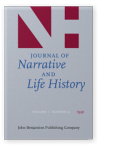Vol. 1:4 (1991) ► pp.343–362
Narrative Structures, Meanings, and Life Histories in the Historical Novel Kaugurieši
Abstract Narrative structures serve the double function of selecting episodes and charac-ters to be included in the narration, as well as offering a generative mechanism for their sequencing, both functions being simultaneous and mutually interac-tive. According to Eco (1984), narrative structures are multilayered, including an abstract level of ideology. Few studies have been done on specific narrative subgenres, such as the historical novel. This article examines a historical novel by Latvian writer Karlis Zariņš (1938, 1948, 1975, 1985), which depicts a failed peasant uprising at Kauguri, Latvia in 1802. Bakhtine's (1978) theoreti-cal notion of chronotope is invoked, distinguishing the external chronotope— the general historical and geographic situation—from the internal chronotope—the sequence of individual transformations. In Kaugurieši, the ex-ternal chronotope is depicted as a sociopolitical chess game, in which the Rus-sian king and the German knights play active roles, the queen is chance, and the pawns (Latvian peasants) are helpless victims. The plot centers on a tragi-cally failed attempt by the Latvians to change the historical givens by becom-ing an active, collective force. The internal chronotopes reveal the paths of individual lives, some of which follow the abstract model of heroic quest and sacrifice. (Psychohistory)
